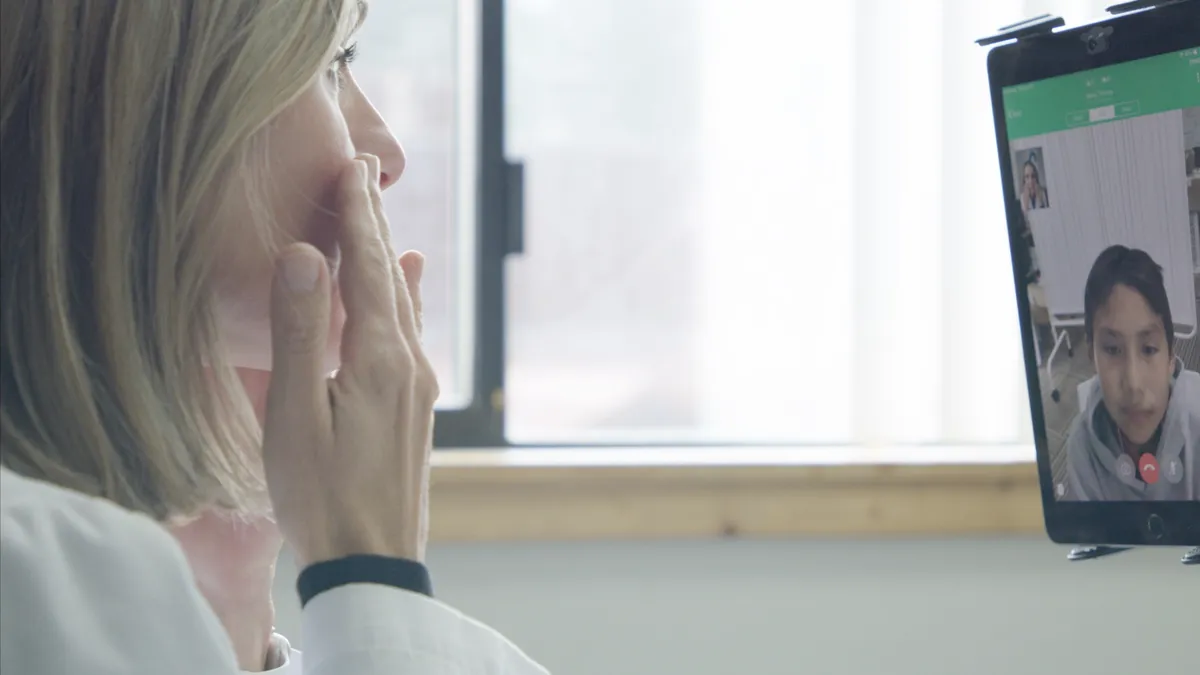Dive Brief:
- Telehealth utilization among the commercially insured fell 16% from January to February, the first month-to-month drop since September, according to a tracker from nonprofit Fair Health.
- The data suggests a potential slowdown in demand for virtual care services that spiked last year in the early months of COVID-19. Historically high levels of telehealth utilization spurred an unprecedented influx of cash into the digital health sector, but the sustainability of that boom depends in part on continued demand from consumers that could be waning as vaccinations increase and the pandemic wanes.
- Mental health conditions continued to top the list of diagnoses. However, COVID-19, which joined the top five diagnoses list in December, dropped from the list, likely reflecting the national decline in cases in February.
Dive Insight:
The data represents the privately insured population — Fair started its Monthly Telehealth Regional Tracker in May last year, using its database of over 33 billion private claim records to analyze the evolution of telehealth month to month as the pandemic drove unprecedented demand for virtual care. But the report's newest iteration suggests that demand could be slowing.
Telehealth claim lines dropped from 7% of all medical claim lines in January to 5.9% in February, according to Fair. Utilization fell in all four U.S. regions, with the sharpest drop in the West, which saw an 18.3% decrease.
Telehealth use fluctuated over the past year, peaking in April, trending down through September and picking back up again starting in October, amid a resurgence in new coronavirus cases following states relaxing business and social restrictions.

In January, COVID-19 was on the top five diagnoses list nationally and in all regions except the Midwest, but in February was absent nationally and in every region. Mental health conditions have led that list since January, and conditions like depression and anxiety have been exacerbated by the pandemic, sending virtual behavioral health visits surging.
Niche digital health sectors like mental and women's health have been historically underfunded, but 2020 was a banner year for both fields. Mental health saw a record high of equity funding accelerating in the fourth quarter, with a strong number of early stage deals, according to CB Insights.
Investor interest in digital health continued to snowball in the first quarter this year, with digital health funding hitting a record $9 billion. Telehealth companies alone raised a record $4.2 billion.
However, some market watchers have aired worries about a digital health bubble, unsupported by sustainable consumer demand. COVID-19 has served as a major catalyst for growth in the space, but the future of telehealth as a modality is still in flux as the pandemic wanes, Washington deliberates over how best to regulate the sector and more generous payer coverage expires.













